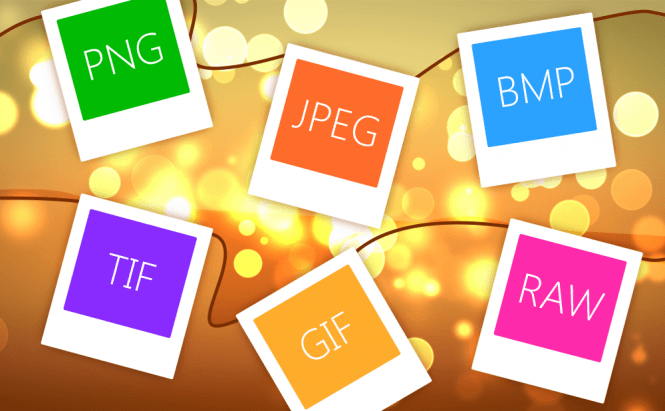How often do you pay attention to the format of the picture you are downloading? I would guess you almost never do. But do you know how many of them there are in total and how they are different from one another? Well, we're not going to count them, but let's have a look at the most popular raster formats: JPEG, BMP, GIF, RAW, and a couple of others – and see how each of them is used best.
What is a raster image?
First of all, what hides behind these words: raster image? Generally, it's an image created of individual pixels, each with its own color information. Raster images are contrasted with vector images, which are based on strokes or paths. Vector graphics don't consist of individual pixels, and thus do not “pixelize†when you zoom in.
JPG
I think it's safe to say that this format is one of the most used, as many of us do not pay much attention to the format set in our digital photo cameras by default. Most are satisfied with the quality they get.
But how does this format stand up from the technical point of view? First of all, it works for 8-bit grayscale and 24-bit color images. Secondly, it compresses images with some data loss (and thus is considered a lossy format), which results in smaller file size, but also in brings in some visual artifacts. Compared to lossless image formats, JPG images can really look much worse.
TIFF
TIFF (Tagged Image File Format) has a quite different use: although this format is also supported by many digital cameras, ordinary users are not that familiar with it and don't use it that much. It is mainly used by printing companies.
TIFF is a very versatile format. It allows for both lossless compression and lossy compression. It supports a wide range of color depth: from 8-bit grayscale to 48-bit color images. Its versatility sometimes causes problems with viewing the images encoded in this format, as there are very few universal TIFF viewers, and most general-purpose image viewers support a limited number of TIFF compression types.
BMP
BMP (Bitmap Image File) is the format used in Microsoft Windows OS by default, so everyone has likely seen a couple BMP files in their life. This format does not employ image compression at all, and is known for large resulting file sizes. While this is surely a downside, the format is easily readable by most applications (even outside Windows) as a result.
GIF
GIF (Graphics Interchange Format) supports both static and animated images. The images are compressed in such a way that there is often no visible data loss, combining good quality with smaller file size.
The format is restricted to 256 colors or 8-bit color depth, but it doesn't use a pre-defined palette. It is best suited for simple graphics with large areas of solid colors, and is often used in web design.
PNG
PNG (Portable Network Graphics) is a name that speaks for itself: it is designed for sharing and storing images on the Internet.
It supports 8-bit, 24-bit, and 48-bit full-color palettes, which is a much wider choice than what you get with GIF. It is suitable for storing pictures you are still working on, as it supports lossless compression, but JPG is still often a better choice for final distribution, especially when the smaller file size is a crucial aspect.
RAW
This is a whole family of formats, rather than an actual format in its own right, and there is still no standard that various imaging companies would agree on. Basically, RAW images contain unprocessed (raw) data from the camera, like the type of sensor used, the intensity of light in each particular pixel, etc. As a result, these files are usually huge in size, and they rarely employ any kind of image compression.
There are many variations of this format used by different photo camera manufacturers, and this is where its biggest disadvantage lies: to be able to view or edit such a file, you'll often have to use proprietary software, which is usually distributed with cameras.
So these are the image formats we are likely to come upon in our everyday life. But what do you do when need your image in a different file format? You're in luck: there are actually lots of free tools that facilitate conversion between most popular image formats. Some of them even support proprietary RAW formats (either through licensing or reverse-engineering). So have a look around and pick the perfect tool for you.






http://batchphoto.software.informer.com/